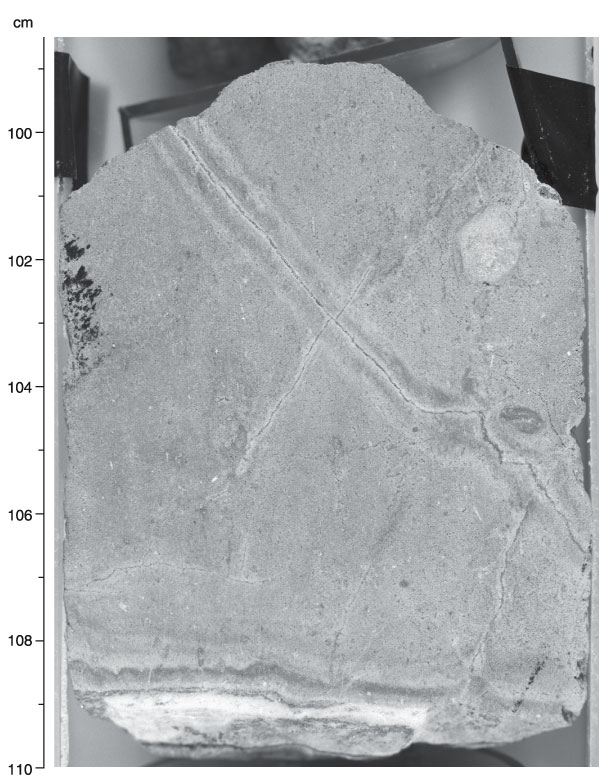
Figure 24B | Table of Contents
Figure 24. Interval 193-1188F-14Z-1 (Piece 6, 98.5–110 cm). A. Close-up photograph. B. Sketch of complex vein relationships (246.86 mbsf). The veins in this piece consist predominantly of anhydrite and pyrite. The two thicker veins, Va and Vb, are surrounded by 1- to 2-mm-thick gray siliceous halos that grade outward into 1- to 2-mm-thick light gray halos more rich in clay minerals (illite?). A thinner siliceous halo is present around vein Vc. In all veins, except for the thickest vein (Va) and the thinnest veins (Vj–Vp), pyrite occupies the center of the veins and is rimmed by anhydrite. Vein Va has coarse anhydrite in the center of the vein, rimmed by thin veinlets of pyrite, followed by a thin rim of anhydrite. The thinnest veins are either pyrite veins (Vj–Vm) or veinlets of anhydrite (Vn–Vp). Some of the thinner veins branch off from the thicker veins (e.g., Vk and Vl from Vb; Vi and Vm from Va; and Vg and Vj from Vc). Veins Vc and Vd are probably part of the same vein, crosscut by Vb. This is evinced by the anhydrite selvages of veins Vc and Vd, which are overprinted by the siliceous halo around Vb (Point A). Furthermore, the right-lateral offset between Vc and Vd matches the space of the extensional jog filled with pyrite of Vb (Point B). Finally, the anhydrite crystals are aligned east-west in the vein intersection at Point A, indicating an east-west extension. Microscopic examination shows that Ve cuts across the halos around both Va and Vb, indicating it to be later. Although these veins show crosscutting relationships, on the basis of their mineralogy and nature of alteration halos, most of the veins in this specimen are considered to be part of the same main veining event. On the basis of mineralogy and nature of the alteration halos, this is considered to be the event that formed most of pyrite-anhydrite veins throughout all of Hole 1188F.
